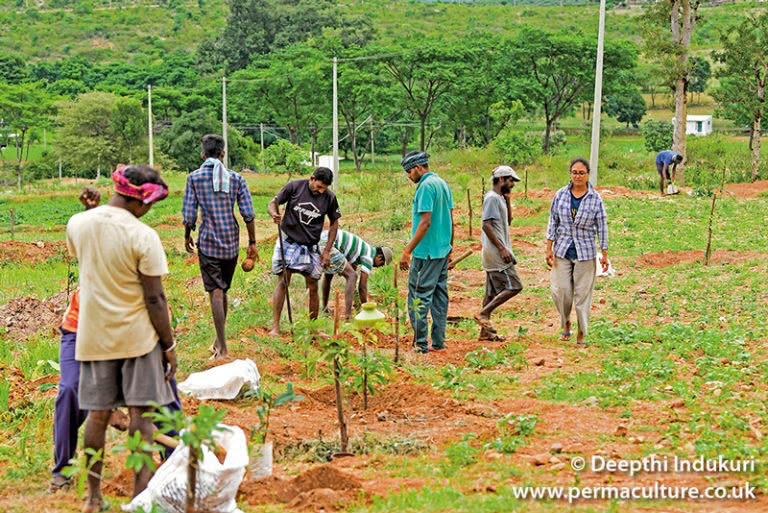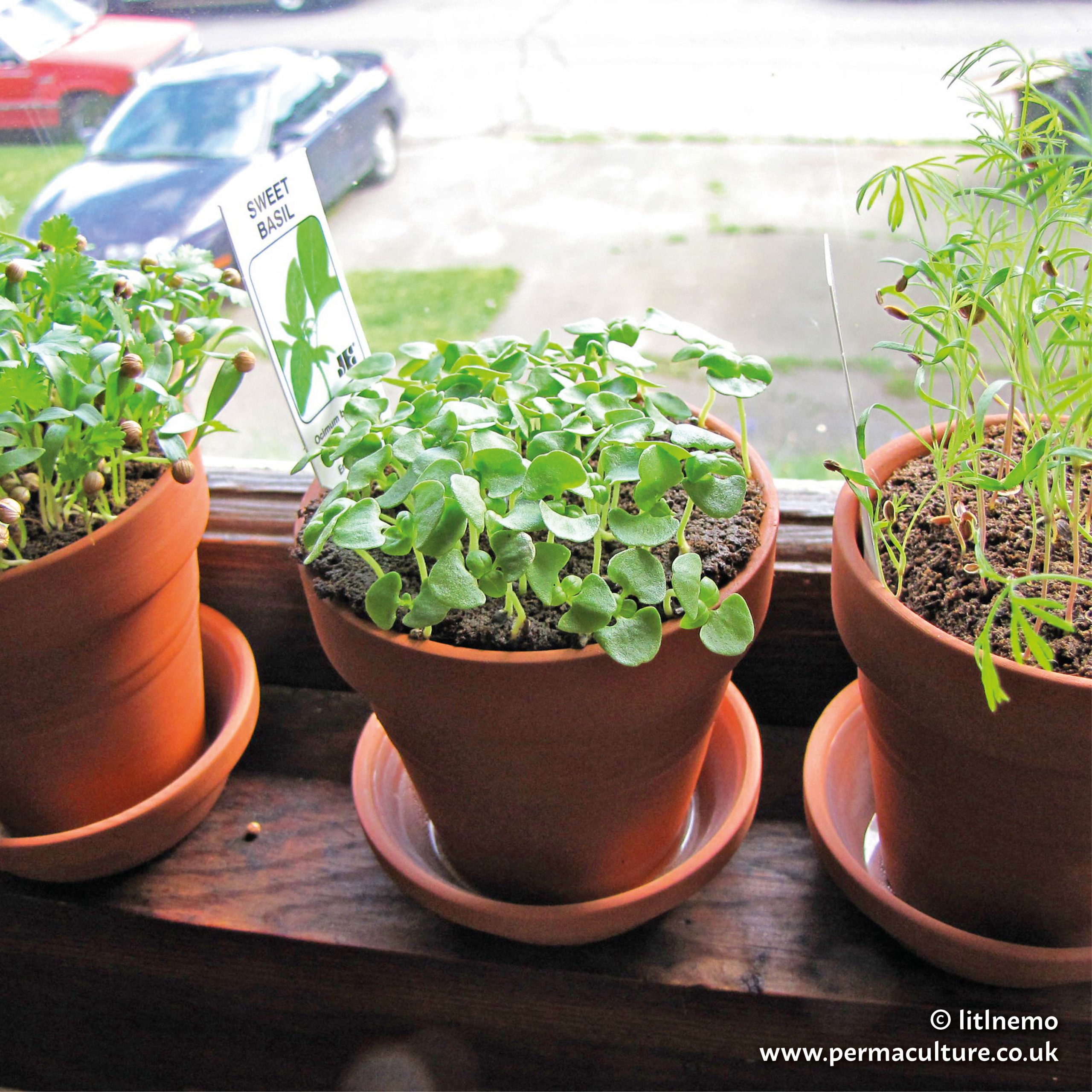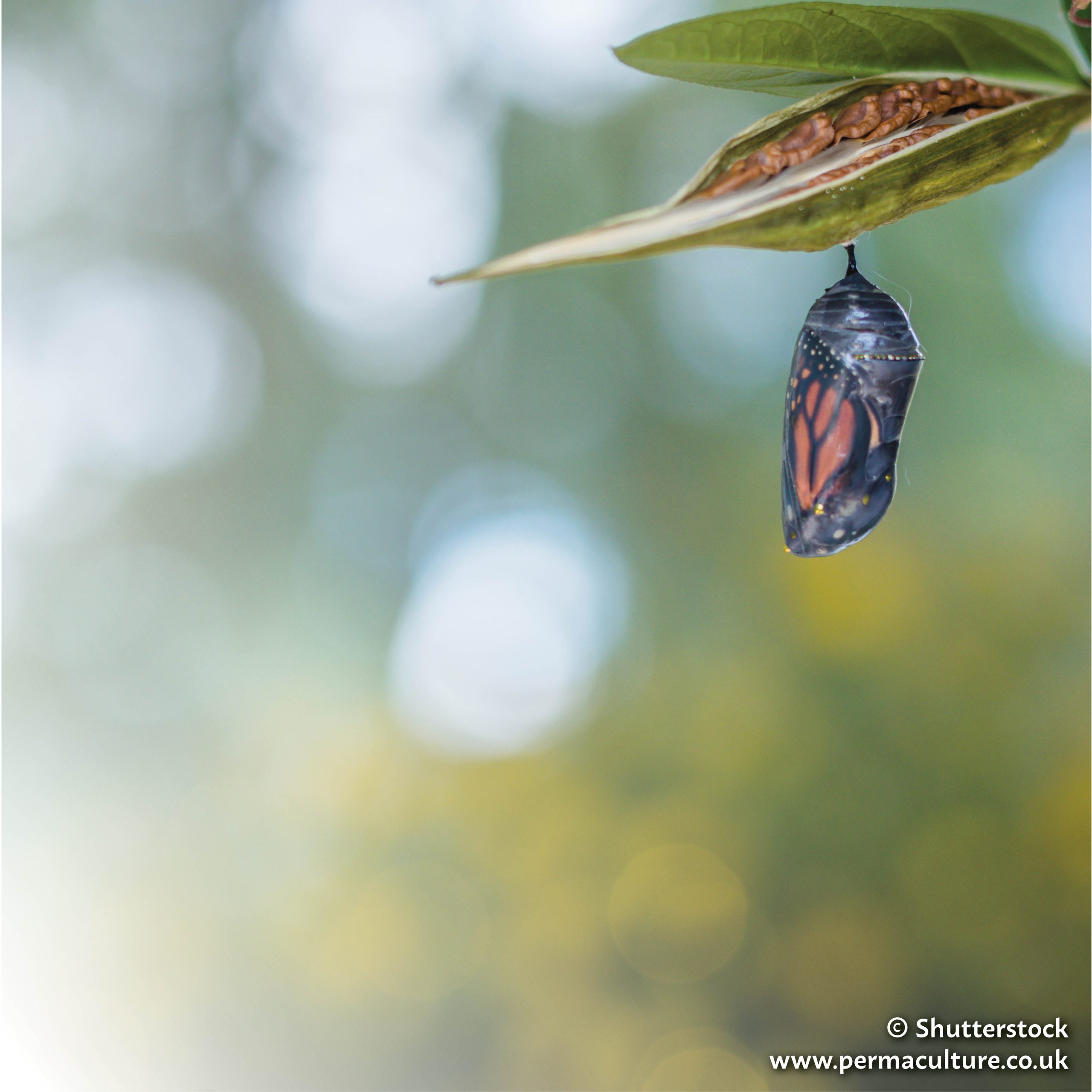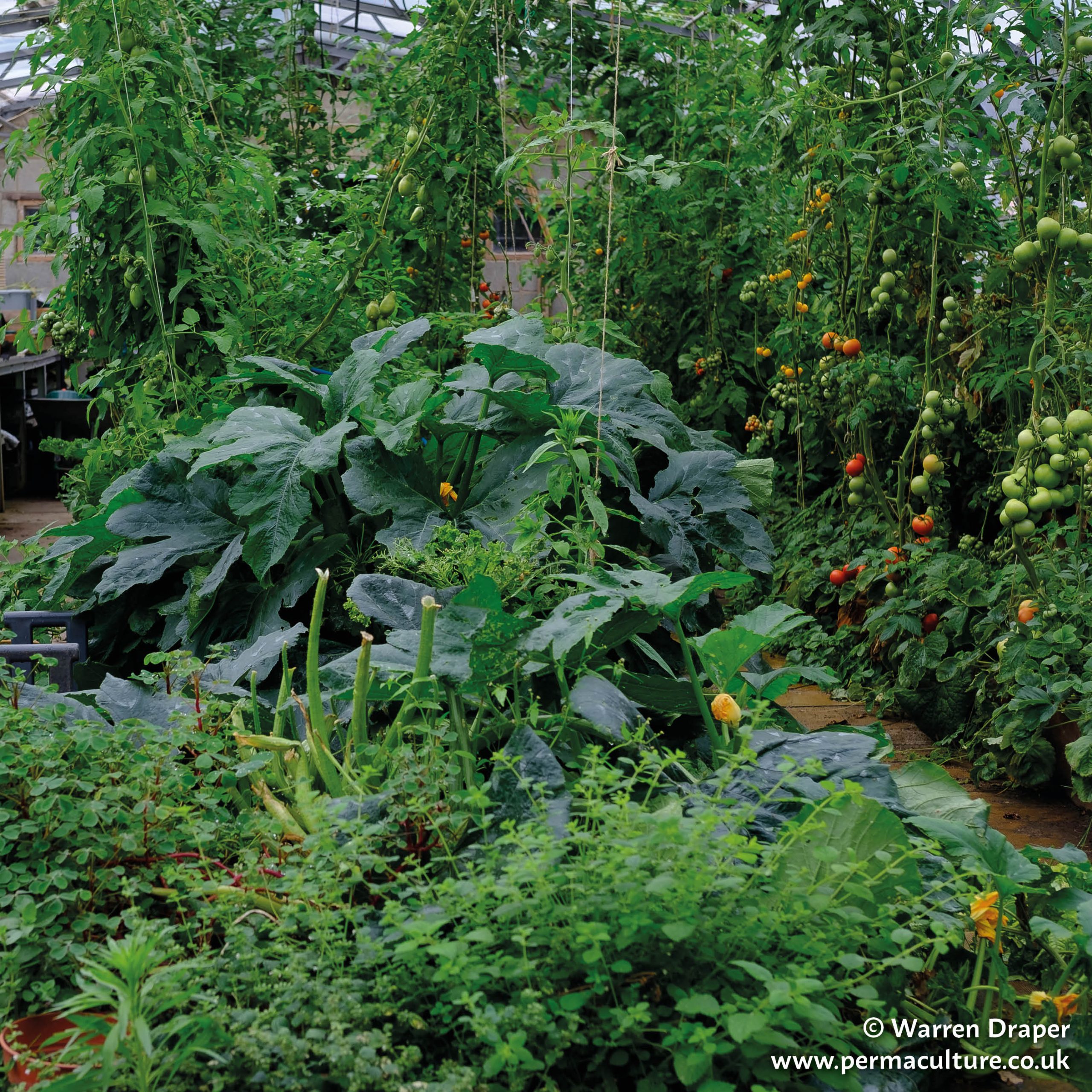How do you grow enough of your own mulch in order to establish thousands of newly planted trees and shrubs? That’s one of the design goals we’re attempting to meet for a 5 ha forest farm currently under development at Balkan Ecology Project in Bulgaria.
The farm is essentially an agroforestry system comprised of mixed species fruit trees, soft fruits and nitrogen fixing shrubs planted in ‘rows’, under-storied with support plants, herbs and perennial vegetables. Between the rows are the ‘alleys’. The alleys have potential to be used for growing hay, cereals, vegetables or rearing pasture raised poultry such as chickens or turkeys.
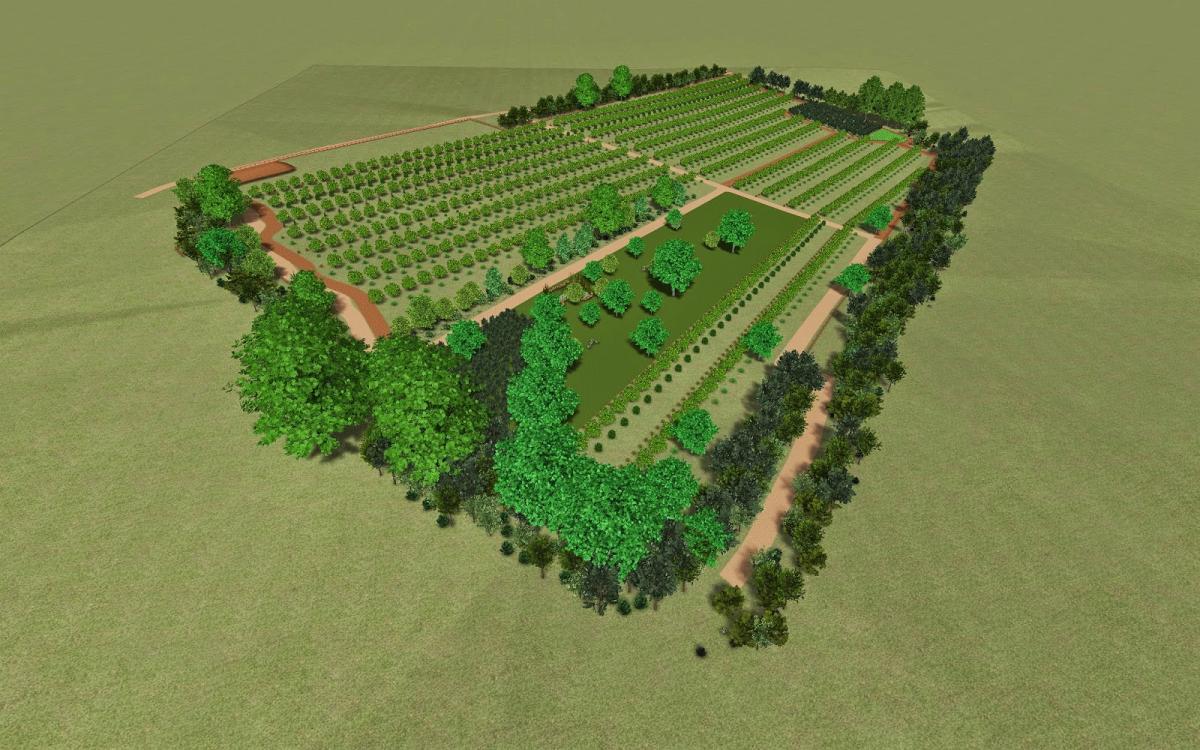
There will be 2,553 trees and shrubs planted across the site. The mulch will be needed for the first five years while the plants establish, and will conserve water, prevent weed competition and improve soil quality as the mulch slowly decomposes over the seasons. For the first five years the alley space will be dedicated to growing this mulch. After the fifth year when the trees and shrubs no longer require mulch the plan is to use the alleys for pasturing poultry.
The farm development has already begun and this year the soil improving cover crops were sown across the site to prepare the soil for planting. The trees are scheduled to be planted in the autumn and spring.
Normally for bulk mulch one would use straw, wood chips or compost (in a cool climate). For the first year we will be using straw, but I’m very interested in finding an on site solution for mulch production, and believe we should be able to supply the bulk of the mulch needed by cultivating grasses in the alleys.
I’ve been looking at perennial grasses that produce large amounts of biomass, that can; grow on poor to average soils; are drought tolerant; ideally have C4 photosynthetic pathway; reproduce via rhizomatous growth; and have seed ripening from late June onward. For this location, we also require plants hardy to -20oC that have forage potential for future poultry operations. As well as the grass species we’ll be including herbaceous perennial nitrogen fixers with seeding times that overlap with the grass species.
In my opinion the best place to start when selecting any plants for any site is to look at what is already growing. Identifying the plants on the land is a great way to get to know your plants and your land. I’m pretty confident with European native tree and shrub identification, but not so confident with the huge diversity of Bulgarian herbaceous plants, so I contacted Rossen Vassilev from the Bulgarian Biodiversity Foundation to undertake a botanical survey of the herbaceous plants. His summer survey revealed 60 species growing on the plot, with 10 of those fitting the criteria for mulch production.
My second port of call for plant selection was Uncle Google, where I came across Grass Portal, an excellent resource having been developed specifically for researching the biomass potential of grasses. Grass Portal allows you to search for plants based on criteria including plants with C4 photosynthetic pathway (not including flowering times). I found a further four suitable species suitable from the Grass Portal database three of which were C4 plants.
Below are the plants subsequently selected for sowing in the alleys.
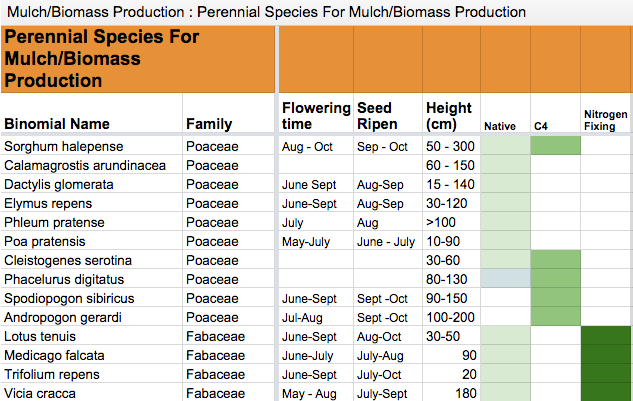
You don’t want to be applying hundreds of thousands of grass seeds at the base of tree crops. Grasses can be considered the arch enemy of young trees/shrubs and will generally out compete them for water and nutrients. To avoid this problem I am selecting plants that produce seed at around the same period and not before June. This way, the first cut can be made seed free and before the water and associated nutrient stress of summer kicks in. The second cut can be made as soon as the growth exceeds 1m in height. Depending on the weather in that particular season a third cut may be possible.
At this location June is the wettest month of the year, with July and August being the driest. Therefore I am planning for a mulch application every June following a heavy rain so that the ground is well soaked and the mulch can conserve the soil water and prohibit weed growth from competing with crops during the dry summer months. The mulch from the initial autumn planting should still be in place, although by June some plants will be making their way through the mulch. These plants will be pulled and applied to the surface along with the new mulch.
The mulch will be cut using a sickle bar tractor implement of 2.3m width that can be attached to a compact utility tractor such as a John Deere 3250. Two passes with the sickle bar will leave a strip uncut that is left to provide extra habitat for beneficial invertebrates such as spiders and ground beetles. The strip can be cut every two years on alternate sides of the alley.
Grasses running into rows
I’m looking for plants that spread via rhizomes so that the vegetation develops and regenerates quickly, however, this may cause problems for the soft fruits and nitrogen fixing plants growing along side the alleys. A solution to this would be to place a proprietary barrier between the crops and the grasses, another could be clearing a 30cm wide trench twice a year, which could also serve as a mini basin for water catchment.
Seed dispersal from second cuts
It is unclear to me how fast the plants will flower following the first cut. It could be that with water stress kicking in during the summer the regrowth will bolt to seed. Close observation is required here and the second cut may have to be used for hay or hot compost to prevent seed dispersal.
Based on average data from local sources I have estimated that an average of 0.60kg per m2 (dried weight) can be harvested in a year. This includes two cuts being made per year.
The weight of a standard square bale = 19kg (based on an average dried weight of a bale) so it takes and area of 31.6m2 to grow enough vegetation to make 1 bale.
The area we have on the site for mulch growing is as follows:
Alleys = 16112m2 = 510 bales
Meadow = 1846m2 = 55 bales
Total bale production = 565
Using a third of a bale for each plant will cover 1,695 plants which leaves us 858 plants still needing mulch. Mowings from the Inter Alleys (see diagram below) may also be used and we’ll be experimenting with a 600m2 patch of Robinia psuedoacacia runners that will be mowed twice a year, when the growth is still soft and herbaceous, and see what biomass we receive from this.
We’ll make up any shortfalls from spoiled straw and municipality green waste.
This article originally appeared HERE.
Paul runs the Balkan Ecology Project in Bulgaria with his wife Sophie Roberts and their two boys Dylan and Archie.
